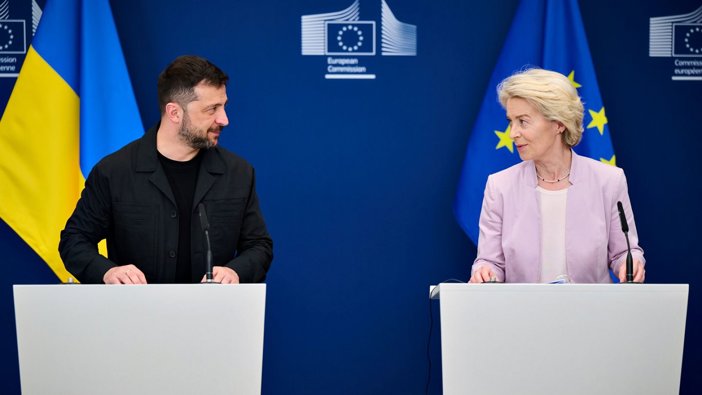
EU Plans €140 Billion Scheme to Fund Ukraine via Russian Assets
The EU prepares a bold funding plan for Ukraine using immobilised Russian assets as collateral in a €140 billion scheme.
The European Union (EU) is advancing plans to channel support to Ukraine through 2026-2027 by leveraging frozen Russian sovereign assets—an initiative that aims both to assist Kyiv’s war effort and apply sustained pressure on Russia. The bold proposal, shaped around a so-called “reparations loan,” is gathering momentum even as major legal and political questions remain unresolved.
Funding Ukraine: Tough Choice & Strategic Shift
During recent discussions, the EU leadership confirmed that the bulk of the funding earmarked for Ukraine would derive from cash balances associated with Russian assets frozen in western jurisdictions, notably held at the Belgian central securities depository Euroclear. Officials estimate that approximately €210 billion of Russia’s immobilised reserves are held across the EU, with again the lion’s share in Belgium.
The strategy aims to convert these frozen assets into operational funds for Ukraine’s defence and reconstruction without technically seizing the assets—a red-line for many EU member states. Instead, the assets serve as collateral for a loan that Ukraine would repay only if and when Russia fulfils future reparations obligations.
For Ukraine, the mechanism offers vital liquidity at a moment when U.S. funding support appears less certain. For the EU, it signals a strategic pivot: deeper commitment to Ukraine, but at heightened diplomatic and legal risk.
Anatomy of the “Reparations Loan”
At its core, the scheme involves the following steps:
- Russian central bank assets that were frozen following Russia’s 2022 invasion of Ukraine remain immobilised and generate no direct return to Moscow.
- These cash balances (or the proceeds thereof) would be used by the EU to issue a large-scale loan to Ukraine (proposed at up to €130-140 billion) with collective risk shared by member states.
- Ukraine would only be expected to repay if Russia pays reparations; if not, the loan remains in essence unrecoverable and the collateral remains frozen.
- The EU emphasises the assets are not being confiscated outright—thereby preserving the legal status quo of sovereign immunity and international financial stability.
This construct is designed to satisfy multiple criteria: delivering funds to Ukraine, maintaining the rules-based international order, and avoiding an immediate shock to the European financial system.
Legal & Political Hurdles
Several major obstacles stand in the way of prompt implementation:
- Legal risk: The European Central Bank (ECB) and various member states have flagged concerns that mis-handling sovereign assets could undermine confidence in the euro and financial markets.
- Member-state liability: Countries like Belgium—which hosts Euroclear and holds the largest tranche of frozen assets—have insisted on strong assurances that they will not bear the full risk alone. Belgium has threatened to veto the mechanism unless risk-sharing guarantees are secured.
- Budgetary concerns: Countries with high debt levels (e.g., France) are cautious about underwriting the scheme or creating contingent liabilities that may back-fire.
- Precedent risks: Legal scholars argue that outright confiscation of sovereign assets could set a global precedent, undermining Western financial architecture and inviting retaliatory action.
Together, these factors mean the plan is far from guaranteed—and any misstep could produce unintended consequences.
Why Now?
Several converging pressures have accelerated the push:
- Ukraine faces widening budget gaps as the war drags on and reconstruction costs mount. Ukrainians and allies alike recognise that immediate large-scale funding is needed.
- The U.S. appears less willing to carry the full burden of funding Ukraine’s war effort, shifting political and operational strain toward Europe.
- The frozen Russian asset pool has matured to the point where it can realistically serve as a funding base; many securities have reached maturity and cash reserves now sit in Euroclear, making them operationally available.
Thus, timing is critical: the EU wants to signal robust support to Ukraine while the window of opportunity—and risk tolerance—remains open.
What’s at Stake?
For Ukraine: The proposed financing would provide a two-year lifeline (through 2026-27) to sustain military operations and reconstruction, offering a path beyond short-term bilateral aid.
For the EU: Successfully deploying this mechanism could establish a precedent for how sovereign asset freezes can be transformed into strategic support without violating legal norms. Failure—or a poorly designed roll-out—could undermine currency stability, weaken the EU’s internal cohesion and tarnish its global credibility.
For Russia: While Moscow has denounced the move as “theft” and warned of consequences, the global leverage shifts—frozen assets become not just a sanction but a direct funding lever against Russia’s war.
Will Russia lose its assets without compensation?
Not officially. The plan calls for immobilising the assets and using them as collateral. The principal remains intact unless Russia pays reparations; thus, the approach stops short of outright confiscation.
What is the scale of the loan under consideration?
The most recent public figures suggest the mechanism could support up to €130-140 billion for Ukraine’s war effort through 2026-27.
What are the main risks to the EU?
Legal exposure, financial contagion (if asset rights are challenged), member-state domestic backlash, and setting precedent that may alter global reserve behaviours—all pose major risks.
When would funds be available?
While no firm date has been set, officials suggest disbursement could begin as early as 2026, after political agreement and legal frameworks are finalised.
What Comes Next?
Political leaders from across the EU are expected to finalise a decision outline in upcoming summit meetings. Following that, finance ministries will hash out technical architecture, risk-sharing frameworks and legal frameworks to ensure compliance with international law. Belgium’s conditional support remains a key hinge point. Once approved, the mechanism could become a template for how frozen assets are converted into strategic funding without “confiscation” sensu stricto.
Final Assessment
The EU’s reparations-loan proposal represents a bold and innovative attempt to marry financial engineering with geopolitical strategy. By converting frozen Russian assets into a lifeline for Ukraine, Brussels is signalling a deeper long-term commitment—even as it tries to navigate legal minefields and fiscal unease. If executed successfully, it could reshape the global sanction framework and provide a model for hybrid “asset liability → strategic support” mechanisms. If mishandled, the stakes are high: costly legal blow-back, weakened euro credibility and internal EU fractures.
For Ukraine, the mechanism offers hope; for Europe, it presents both opportunity and risk.
Source: Reuters Bruegel euronews European Council on Foreign Relations






